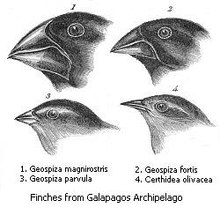User:Jaspergeli/Genetic variation


Genetic variation means that biological systems – individuals and populations – are different over space. Each gene pool includes various alleles of genes. The variation occurs both within and among populations, supported by individual carriers of the variant genes.
Genetic variation is brought about, fundamentally, by mutation, which is a permanent change in the chemical structure of chromosomes. Genetic recombination also produces changes within alleles.
Among individuals within a population
[edit]Genetic variation among individuals within a population can be identified at a variety of levels. It is possible to identify genetic variation from observations of phenotypic variation in either quantitative traits (traits that vary continuously and are coded for by many genes (e.g., leg length in dogs)) or discrete traits (traits that fall into discrete categories and are coded for by one or a few genes (e.g., white, pink, red petal color in certain flowers)).
Genetic variation can also be identified by examining variation at the level of enzymes using the process of protein electrophoresis. Polymorphic genes have more than one allele at each locus. Half of the genes that code for enzymes in insects and plants may be polymorphic, whereas polymorphisms are less common among vertebrates.
Ultimately, genetic variation is caused by variation in the order of bases in the nucleotides in genes. New technology now allows scientists to directly sequence DNA which has identified even more genetic variation than was previously detected by protein electrophoresis. Examination of DNA has shown genetic variation in both coding regions and in the non-coding intron region of genes.
Genetic variation will result in phenotypic variation if variation in the order of nucleotides in the DNA sequence results in a difference in the order of amino acids in proteins coded by that DNA sequence, and if the resultant differences in amino acid sequence influence the shape, and thus the function of the enzyme.
Between populations
[edit]Geographic variation means genetic differences in populations from different locations. This is caused by natural selection or genetic drift.
Measurement
[edit]Genetic variation within a population is commonly measured as the percentage of gene loci that are polymorphic or the percentage of gene loci in individuals that are heterozygous.
Sources
[edit]
Random mutations are the ultimate source of genetic variation. Mutations are likely to be rare and most mutations are neutral or deleterious, but in some instances, the new alleles can be favored by natural selection.
Polyploidy is an example of chromosomal mutation. Polyploidy is a condition wherein organisms have three or more sets of genetic variation (3n or more).
Crossing over and random segregation during meiosis can result in the production of new alleles or new combinations of alleles. Furthermore, random fertilization also contributes to variation.
Variation and recombination can be facilitated by transposable genetic elements, endogenous retroviruses, LINEs, SINEs, etc.
For a given genome of a multicellular organism, genetic variation may be acquired in somatic cells or inherited through the germline.
Forms
[edit]Genetic variation can be divided into different forms according to the size and type of genomic variation underpinning genetic change. Small-scale sequence variation (< 1Kbp) includes base-pair substitution and indels. Large-scale Structural variation (>1Kbp) can be either copy number variation (loss or gain), or chromosomal rearrangement (translocation, inversion, or Segmental acquired uniparental disomy). Genetic variation and recombination by transposable elements and endogenous retroviruses sometimes is supplemented by a variety of persistent viruses and their defectives which generate genetic novelty in host genomes. Numerical variation in whole chromosomes or genomes can be either polyploidy or aneuploidy.
Maintenance in populations
[edit]A variety of factors maintain genetic variation in populations. Potentially harmful recessive alleles can be hidden from selection in the heterozygous individuals in populations of diploid organisms (recessive alleles are only expressed in the less common homozygous individuals). Natural selection can also maintain genetic variation in balanced polymorphisms. Balanced polymorphisms may occur when heterozygotes are favored or when selection is frequency dependent.
Text is available under the CC BY-SA 4.0 license; additional terms may apply.
Images, videos and audio are available under their respective licenses.
